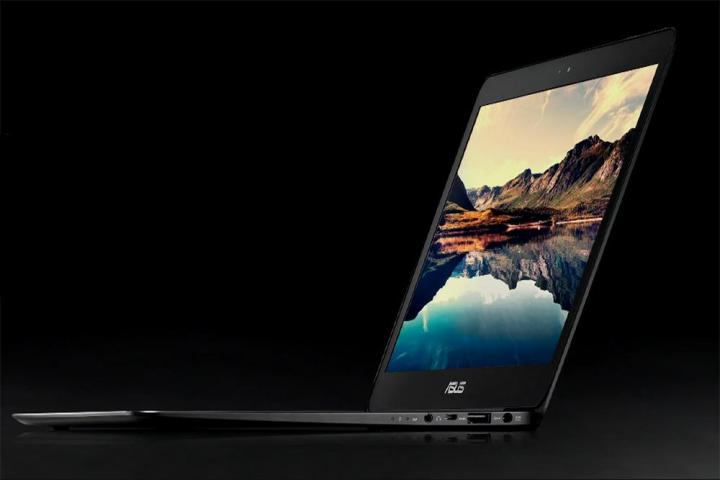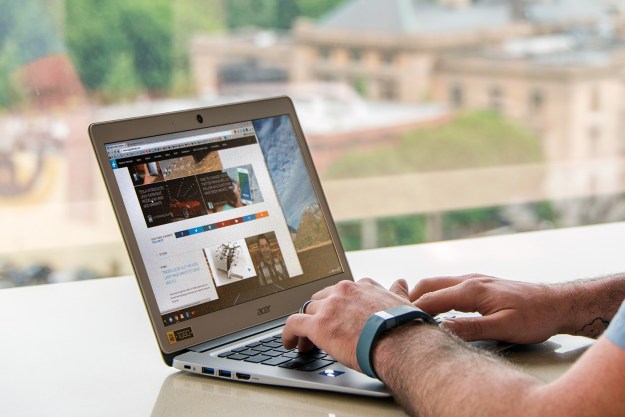
Related: Intel reveals Core M processor at IFA 2014
Intel is able to make such proclamations because of a few key attributes possessed by Intel Core M chips. Intel Core M is a fanless chip, so aside from not needing a fan to cool it, PC makers can also strip out other parts associated with cooling as well, including heat sinks, and vents. This can help OEMs to make slimmer devices than they would with chips that need fans.
Also, Intel claims that Core M only needs about 4.5 watts to work, while previous-generation low-power Intel Core chips need 11.5-watts to operate. If that turns out to be accurate, that’s an energy use reduction of over 50 percent, which could lead to super-efficient devices with significantly improved battery life over systems compared to the last batch of systems with low-power Intel Core CPUs in them.
Related: Fire Intel Core M benchmarks released
Not only did Intel offer more details about Core M at IFA, but multiple PC makers, including Lenovo and Dell, revealed products that will be powered by Core M once they launch this fall.
So, which laptops will have Intel Core M inside? Read on to find out.
Lenovo ThinkPad Helix
The new Lenovo ThinkPad Helix is a sequel to the previous released ThinkPad Helix which launched around the beginning of 2013. We liked the previous version mainly because of its excellent keyboard, detachable design, and long battery life.
The new Lenovo ThinkPad Helix improves on its predecessor by adding an extra low-end keyboard dock without a battery, which makes the entire package lighter. Meanwhile, the higher-end dock, which is called the Ultrabook Pro, not only packs in a built in battery, but keyboard back-lighting as well. The latter feature wasn’t available with the last Helix, which could be a pain point for people who work late into the evening.
Aside from the Core M processor, the new Helix will include an SSD between 128GB and 512GB, and as much as 4GB of RAM. As was the case last time around, the display measures 11.6-inches, and features 1080p resolution as a standard.
Maybe best of all, the new Lenovo ThinkPad Helix will start at $999 once it launches sometime this October. By comparison, the entry-level Helix that was released in early 2013 starts at $1,499 on Lenovo’s site, as of this writing.
Update: When we initially spoke with Lenovo about the new Helix, we were told that it would max out at 4GB of RAM. Lenovo now informs us that that number is actually double. You can get as much as 8GB of RAM with the new Helix.
Dell Latitude 13 7000
One of Dell’s newest business notebooks, the Dell Latitude 13 7000, will be shipping with Intel’s Core M chip this fall.
The Latitude 13 7000 wears a 13.3-inch 1080p display that you can rip from the unit’s base, and employ it as a tablet.
Aside from Core M, the Latitude 13 7000 will sport SSDs up to 512GB, and as much as 8GB of RAM. Port selection consists of two USB 3.0, headset jack, and a memory card reader. Options include a SIM card reader for mobile broadband connectivity, a fingerprint reader, and support for NFC.
Dell claims that it will offer all-day battery life, courtesy of an optional keyboard dock with a 20 watt-hour battery to add onto the tablet’s 30 watt-hour battery. Combined, the two battery slabs could team up to truly run all day, as Dell claims.
Even with the extra battery, Dell says that the Latitude 13 7000 won’t weigh more than 3.7 pounds.
The Dell Latitude 13 7000 will start at $1,199, and hit the market sometime this October.
Asus ZenBook UX305
In its IFA 2014 keynote address, Asus took a swipe at Apple by saying that its new ZenBook UX305 is “lighter than air.”
Time will tell if that’s indeed the case when compared to the MacBook Air. For now, what we do know is that the Asus ZenBook UX305 will pack a Core M processor. Core M’s fan-less nature could allow the UX305 to be freakishly thin, but we won’t know for sure until we get one in our hands. Asus rates the UX305’s weight at 2.64 pounds, but what we don’t know is whether that’s the minimum or maximum weight, considering that multiple configurations will be available.
On top of that, the Asus ZenBook UX305 will wear a 3200×1800 display measuring 13.3-inches. If you don’t need that kind of resolution, a 1080p model will also be available. RAM and storage will max out at 8GB and 256GB. Only SSDs are available.
The Asus ZenBook UX305 will wield a trio of USB 3.0 ports, along with micro HDMI, a headphone/mic jack, and a micro SD card slot.
There’s no word on pricing or availability for the Asus ZenBook UX305, but we expect it to launch sometime this fall.
HP Envy X2
The new HP Envy X2 will come in two flavors. One is a 13.3-inch version with a 1366×768 display. The larger 15.6-inch model will ship with 1080p. Both will ship with Intel’s new Core M CPU. The Envy X2 will sports a dock-able 2-in-1 body.
Not much is known about the new HP Envy X2 overall. Based on the photos we’ve seen, it looks like it will be passively cooled. Also, a stand may be required to keep the display upright, which could pose a problem. Only laptop-tablet hybrids like the Surface Pro 3 need a stand to keep them propped up. Laptops typically just stand up on their own.
The 13.3-inch model will arrive on store shelves starting October 29 for $1,050 at a minimum. The 15.6-inch version will have a starting price of $950, and is expected to hit the market starting November 5.
More coming
There’s little doubt that more notebooks with Core M inside will be announced in the coming weeks and months. We’ll update this piece accordingly as they come to light.
Editors' Recommendations
- Lenovo sale: Get up to 67% off ThinkPad Laptops, from $600
- Best Buy’s deal of the day is $150 off the MacBook Air M2
- HP Envy vs. Pavilion: Which is the better laptop line?
- Best HP laptop deals: Get a 17-inch workhorse for $270 and more
- Acer gets serious about 14-inch gaming laptops


